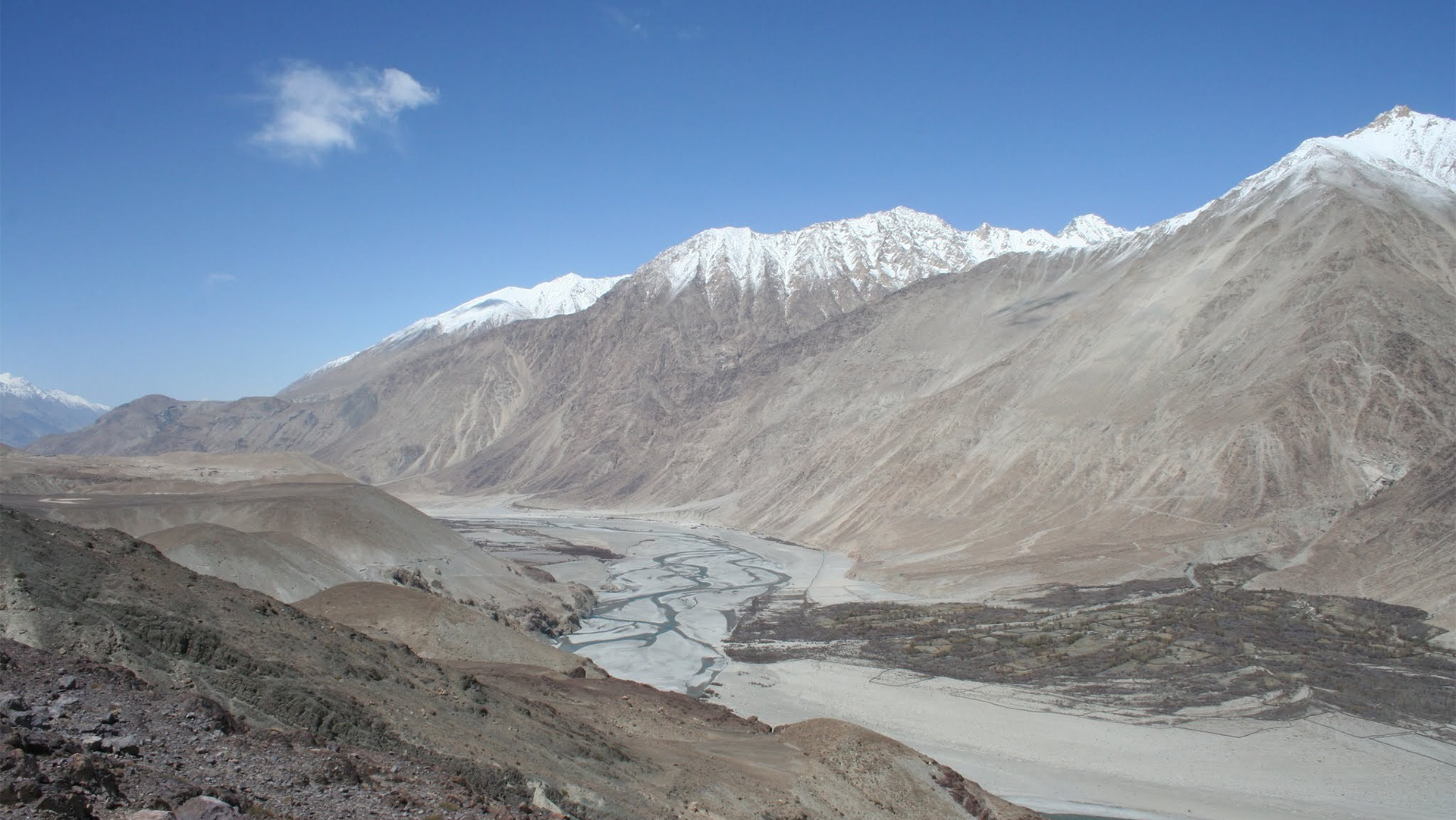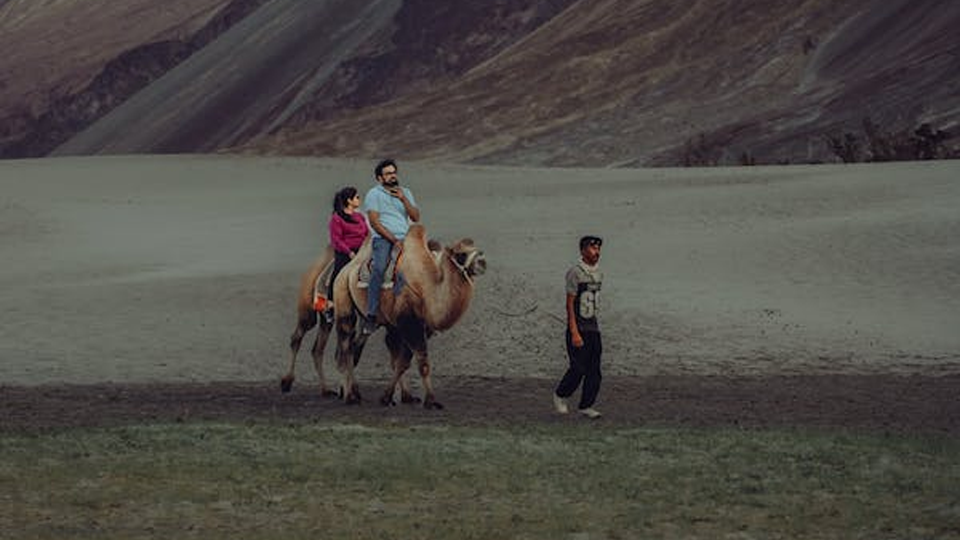Nubra Valley Location
Nestled amidst the snowcapped Himalayan ranges, Nubra Valley is found sandwiched between Tibet and Kashmir. The valley’s view is characterized by its picturesque and breathtaking beauty. Consequently, during the winter months, the entire valley takes on the appearance of a lunar landscape, which is why it is often referred to as “Moonland.” Conversely, in the summer, it transforms into a lush oasis, teeming with greenery. For instance, one can witness the stark contrast between these seasons when exploring the region. Additionally, this natural diversity further enhances the valley’s allure for travelers.
Reaching Nubra:
To reach Nubra Valley, Khardung La, the highest motorable pass globally, must be crossed. Therefore, as a result of your journey over this awe-inspiring pass, you’ll encounter the winding channels of the Shyok and Nubra Rivers, which crisscross the wide, seemingly parched, and flat Nubra Valley. Consequently, it may appear arid from a distance. However, firstly, the valley primarily comprises prime farmland. Secondly, no wonder it has earned the sobriquet “Orchard of Ladakh.” Moreover, in addition to its breathtaking landscapes, the valley boasts fertile soil for agriculture. For instance, farmers cultivate various crops here, making it a significant agricultural region.
Popular sights & attractions:
Situated about 150 km from Leh, Nubra Valley is known as the Orchard of Ladakh and was originally called Ldumra (La-Dum-ra) , signifying the valley of flowers.
Therefore, it is not just the scenic natural beauty of Nubra that attracts tourists. The valley is predominantly Buddhist and is further renowned for several centers of Buddhist learning. For instance, Ensa, Samstemling, Diskit, and Hunder monastery are famous Buddhist monasteries.
Moreover, the cold desert between Diskit and Hundur is another attraction for tourists. Consequently, tourists throng the cold desert to watch the sand dunes and for joyrides on the Bactrian camels. Native to the steppes of central Asia, the Bactrian camel has two humps, in contrast to the single-humped camels found in Rajasthan and other parts of India. The Bactrian camels, found only in Hunder, were the main mode of transport when Ladakh was an important stopover on the ancient trade routes with Central Asia.
Additionally, Bactrian camels serve as a pointer to the region’s importance since ancient times. As a major stopover on the ancient Silk Route, Nubra still holds significance as a major trade center for woolen textiles made of Pashmina wool and horticultural crops. Locals produce fruits like apples, walnuts, apricots, almonds, and staple crops like wheat and barley, among others. In addition, the region remains vital for the cultivation and trade of these agricultural products.
Best places to stay and eat:
Numerous hotels, such as Organic Biotique, The Nubra Camp, Stone Edge, etc., are available where a comfortable stay can be enjoyed by guests. These hotels also provide complimentary breakfast.
Best time to visit:
| Months | Best Time | Minimum Temprature (°C) | Minimum Temprature (°C) |
|---|---|---|---|
| January to March | -10 °C | 15 °C | |
| April to July | BEST TIME | 8 °C | 20 °C |
| August & September | BEST TIME | 3 °C | 12 °C |
| October to December | -10 °C | 15 °C |






